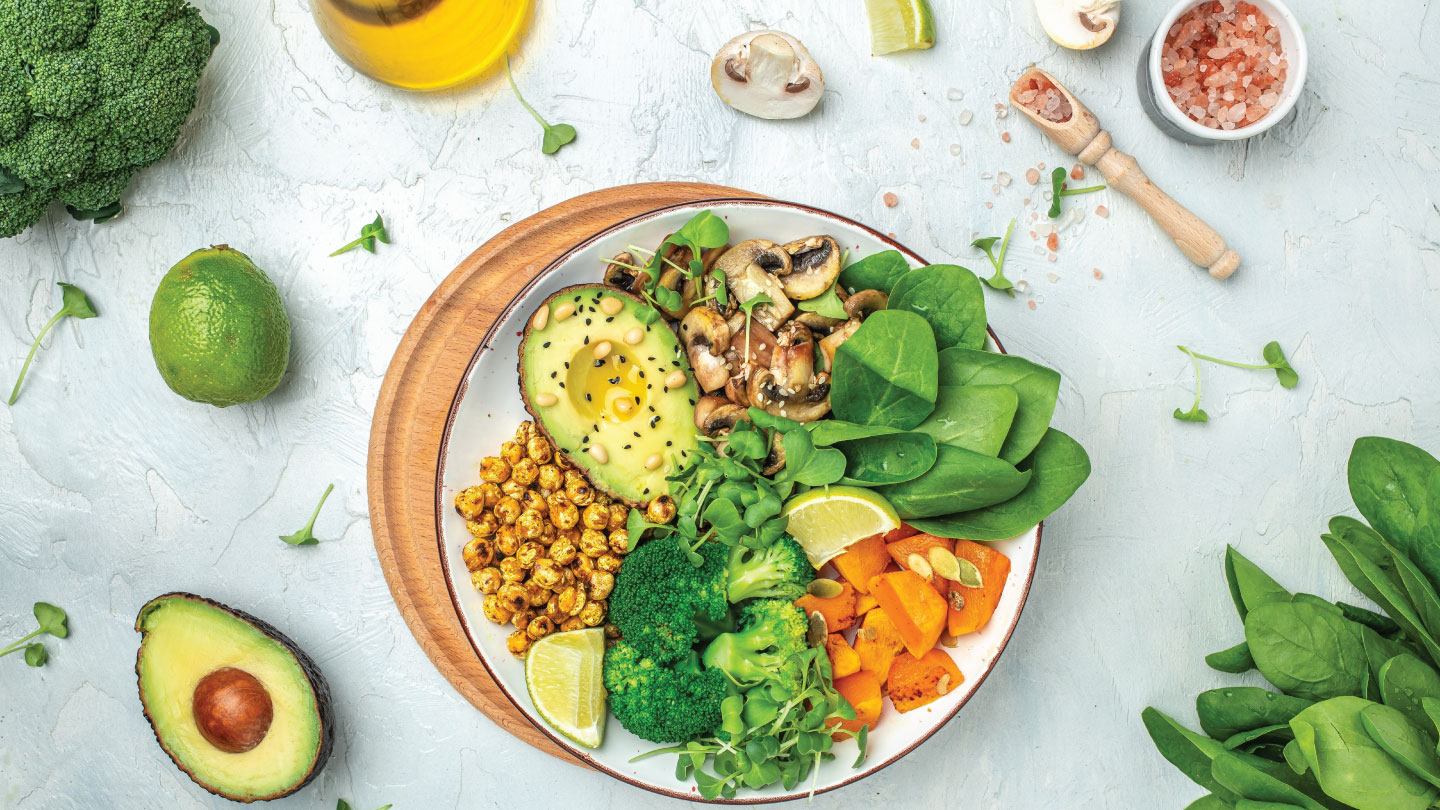Nutrition
Everything You Need to Know About Protein Pacing
Unlike traditional methods that may suggest including protein in just one or two meals, protein pacing suggests consuming protein-rich foods at regular intervals. Keep reading to know more about this approach.

By now, we all know how important protein is for our overall health. But many of us are still unsure about the right way and time to incorporate it. Should we only consume protein during one meal, like having a heavy protein-rich breakfast, or spread it out throughout the day? The timing and distribution of protein intake can make a big difference in how effectively our bodies use it. Protein pacing is an approach that suggests spreading your protein intake evenly across meals and snacks throughout the day. This method helps maximise the benefits of protein for muscle health, energy, and overall well-being.
Developed by Paul Arciero, PhD, a researcher in performance nutrition and exercise training and author of The Protein Pacing Diet, protein pacing is a dietary strategy that focuses on eating protein-rich foods at regular intervals throughout the day, typically every 3 to 4 hours. The idea is to consistently provide your body with protein to support muscle growth, repair, and overall health. Also, it is not all about a high-protein diet, instead It’s more about the right protein at the right time. The researcher also came up with a lifestyle program called PRISE, an acronym that stands for:
- Protein Pacing
- Resistance
- Interval
- Stretching
- Endurance
Shedding more light on the first part of the program, protein pacing diet involves:
1. Eating four to six high-quality, protein-based meals per day.
2. Spacing these meals evenly, eating every three hours.
3. Consuming 20 to 40 grams of protein at each meal.
4. Eating your first meal within one hour of waking up in the morning.
Having your last meal within two hours of going to sleep at night.
Protein pacing is gaining attention as a new health trend because it offers a strategic approach to optimising muscle health, managing weight, and sustaining energy levels. By distributing protein intake throughout the day, typically every 3 to 4 hours, protein pacing supports muscle repair and growth more effectively than sporadic protein consumption. This consistent supply helps prevent muscle breakdown, especially important for those who are active or ageing. Additionally, regular protein intake can help control appetite and stabilise energy levels, reducing the likelihood of overeating and energy crashes.
Related story: How to Resist Toxic Diet Culture
Need all your wellness solutions in one place? A whole new world awaits just a click away.
Protein pacing diet emphasises good-quality protein foods such as
- Nuts and seeds
- Legumes
- Beans
- Pea or brown rice protein powder
- Lean meats
- Tofu
- Tempeh
- Free-range eggs and poultry
- Grass-fed dairy products (including milk, Greek yoghurt, cottage cheese, whey protein powder),
- Wild fish
Unlike restrictive diets or extreme eating plans, protein pacing is flexible and can be adapted to various dietary needs, whether you're vegetarian, vegan, or follow specific eating restrictions. It encourages balanced meals and snacks, making it easier for people to incorporate high-quality protein sources into their daily routine.
Related story: The Beginner's Guide to Flexitarian Diet
What To Avoid Eating in Protein Diet
According to the American Heart Association, not all proteins are created equal when it comes to health. So, it is better to avoid protein foods that are highly processed, as these tend to be high in saturated fat and sodium, which aren’t healthy for your heart, such as bacon, sausage, hot dogs, spam and more.
Related story: Add These 7 Superfoods in Your Diet To Boost Your Health
Does Protein Pacing Diet Work for Weight Loss?
A 2024 study published in the journal Nature Communications concluded that combining intermittent fasting with protein pacing may be more effective for weight loss than calorie restriction. Intermittent fasting with protein pacing involves limiting meals to specific windows and evenly spacing protein intake throughout the eating window.
The study concluded that participants combining intermittent fasting with protein pacing lost more body weight and abdominal and visceral fat mass (fat that is stored inside your abdomen, around your internal organs). They also had an increase in fat-free mass percentage. This may be due to the thermogenic effect of protein and metabolic flexibility.
Does protein make you gain weight? If such questions live rent-free in your mind, then here’s the truth. When you consume protein, your body expends a higher amount of energy to digest and process it compared to fats and carbohydrates. This is referred to as the thermic effect of food, where around 20 to 30 per cent of the calories from protein are used during digestion. It takes a lot of energy to break down proteins, much more than breaking down carbohydrates (about 5 to 6 per cent) and fats (around 2 to 3 per cent).
This process essentially boosts your metabolism, leading to more calorie burning throughout the day. Moreover, starting your meal with protein can help regulate appetite and reduce cravings for unhealthy snacks. It triggers the release of hormones that signal fullness to your brain, curbing the desire to overeat or indulge in calorie-dense, less nutritious foods later in the day.
Additionally, protein is essential for preserving and building lean muscle mass. As you work toward shedding excess body fat, maintaining muscle is crucial for a healthy metabolism.
Related story: Are You Eating More Protien Than You Actually Need
How Much Protein Is Too Much Protein?
According to a 2009 report presented by the Journal of the Canadian Chiropractic Association, changing the kind of protein you eat, how much you eat, and when you eat it can help your body get better at using protein to build muscles after exercising.
A protein-heavy diet is pretty much harmless as long as you’re eating the right kind of protein. According to 2015 research by the Physiology of Nutrition and Eating Behaviour, Paris University, France, eating large amounts of animal protein is linked to weight gain. Red meat, in particular, is linked to an increased risk of cancer as well as heart disease.
Another study by the Institute of Public Health and Clinical Nutrition, University of Eastern Finland, found that men who consumed a diet high in animal protein increased their risk of developing heart failure by thirty-three per cent. An easy solution would be replacing animal protein with the much healthier plant protein varieties, as they can be easily digested and also contain additional nutrients like vitamins, minerals and antioxidants.
Related story: 3 Advantages of Consuming Protein First in Every Morning
Easy Ways to Incorporate More Protein Into Your Diet
- For a protein-rich snack, eat a bowl of Greek yoghurt instead of consuming pre-packaged energy bars. They contain high amounts of sugar, even when the label says otherwise.
- Nuts like almonds or walnuts are great to have around because they can be added to many different foods or eaten on their own as a snack. Add nuts to your salad, breakfast cereal, or even to your oatmeal. They truly are a versatile option that you can add to sweet, savoury and spicy dishes.
- If you’re a fitness enthusiast and workout every day, consider opting for healthy protein supplements like spirulina and nutritional yeast instead of sugar-heavy protein powders.
- From lentils to soya—legumes are an excellent source of protein. Beans are also full of fibre and can be cooked in many ways. Boil and stir-fry them for lunch or bake them for dinner.
- Quinoa is considered a complete protein because it contains all the essential amino acids we need. Replace rice with this healthy seed for extra nutritional value. You can also swap rice for other protein-rich grains like amaranth.
- Need a break from nuts? Try super-seeds instead. Seeds like chia, flax and sesame are not only packed with large amounts of protein, but also contain Omega-3, iron, magnesium and antioxidants.
Need all your wellness solutions in one place? A whole new world awaits just a click away.
Protein pacing offers a strategic approach to optimize protein intake by spreading it out evenly throughout the day. This method supports muscle health, energy levels, and weight management more effectively than traditional methods of consuming protein in fewer, larger amounts. By including high-quality protein sources in each meal and snack, and avoiding processed options, you can enhance your overall well-being.
EXPLORE MORE
From fibre and protein to gut health and mindful meals, these are the healthy eating lessons that stood out in 2025!
Bloating isn’t just about overeating or bad food choices. According to expert nutritionist Dr Lakshmi Kilaru, it’s often the result of multiple factors. Keep reading to know more.
If you’re on a GLP-1, your diet can make or break your health journey. Here’s your guide to avoid common pitfalls.
Bright, tangy, and naturally refreshing, this orange chutney offers a burst of citrusy sweetness with a gentle hint of spice. It’s the perfect accompaniment to elevate daily meals with freshness and depth.







.jpg)

.jpg)
